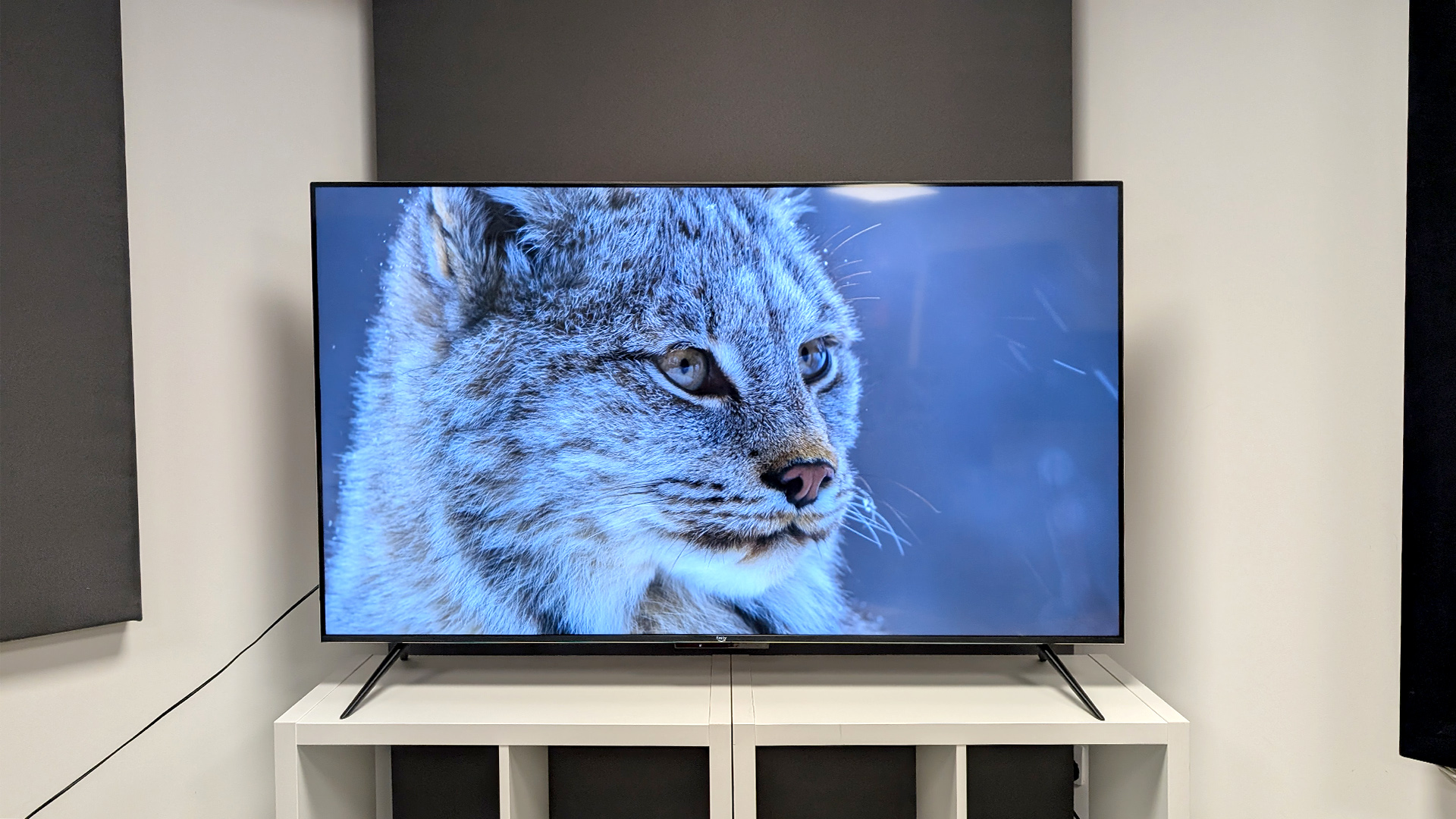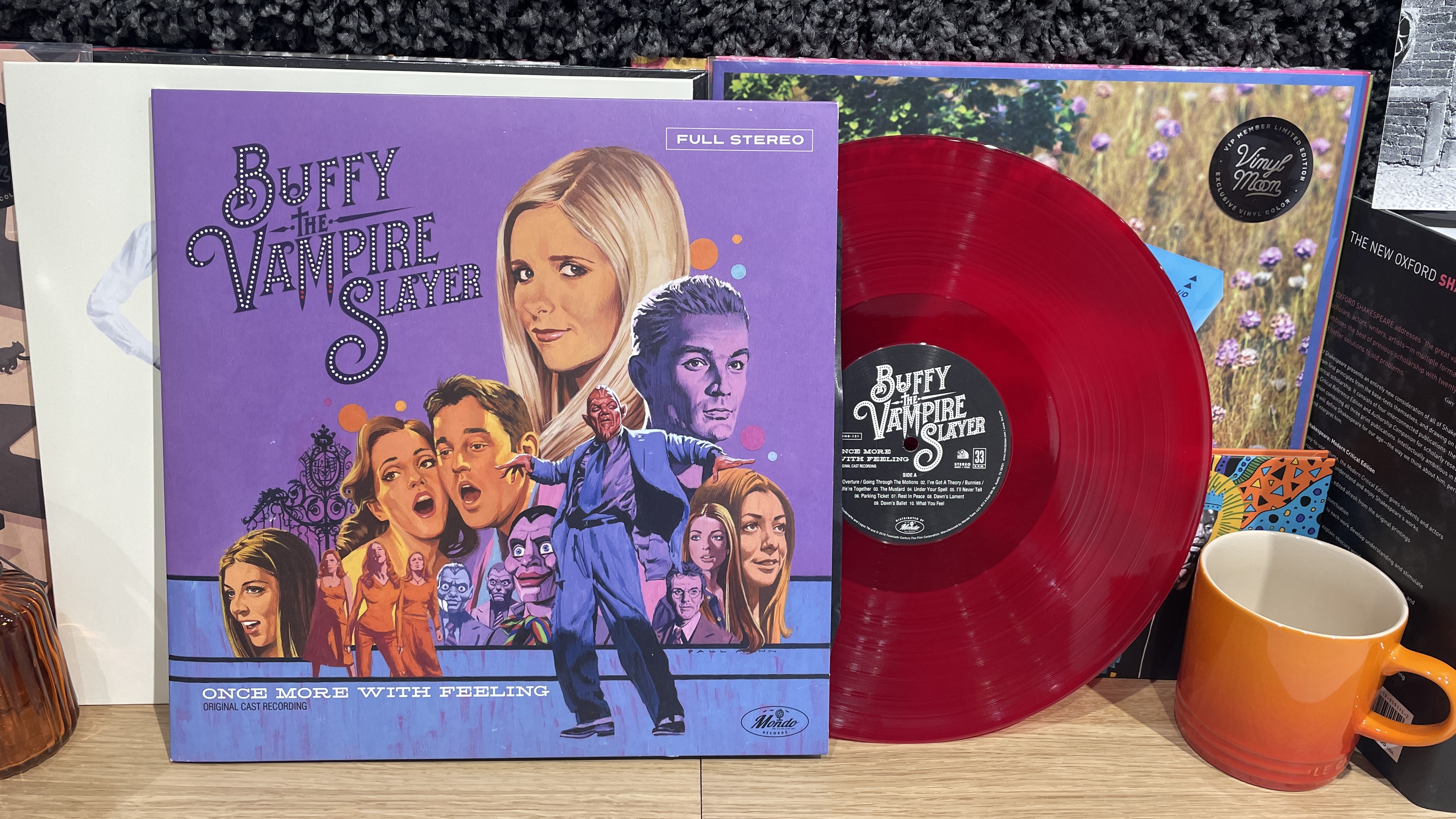What Hi-Fi? Verdict
Amazon’s Fire TV Omni Mini LED is a solid entry point to the mid-range market
Pros
- +
Sharp picture
- +
Excellent app support
- +
Great gaming features for the price
Cons
- -
Middling audio quality
- -
Only one stand option
- -
Not as bright as some rivals
Why you can trust What Hi-Fi?
The Amazon Fire TV Omni Mini-LED is the top dog in the retail giant’s line of own-brand TVs. That makes it the most expensive option firmly in the mid-range, rather than the affordable, price bracket usually targeted by Amazon TVs.
To justify its jump, Amazon has loaded it with a wealth of upgrades that make it a radical upgrade on the Omni QLED model. But, can it compete in its new weight class, which is full of big name rivals from Samsung, TCL, and Panasonic, the last of which now uses Amazon Fire OS on its Mini LED TVs and relaunched in the US last year? Thankfully, based on our week-long stretch of comparative testing, we’re pleased to report the answer is, for the most part, yes.
Price
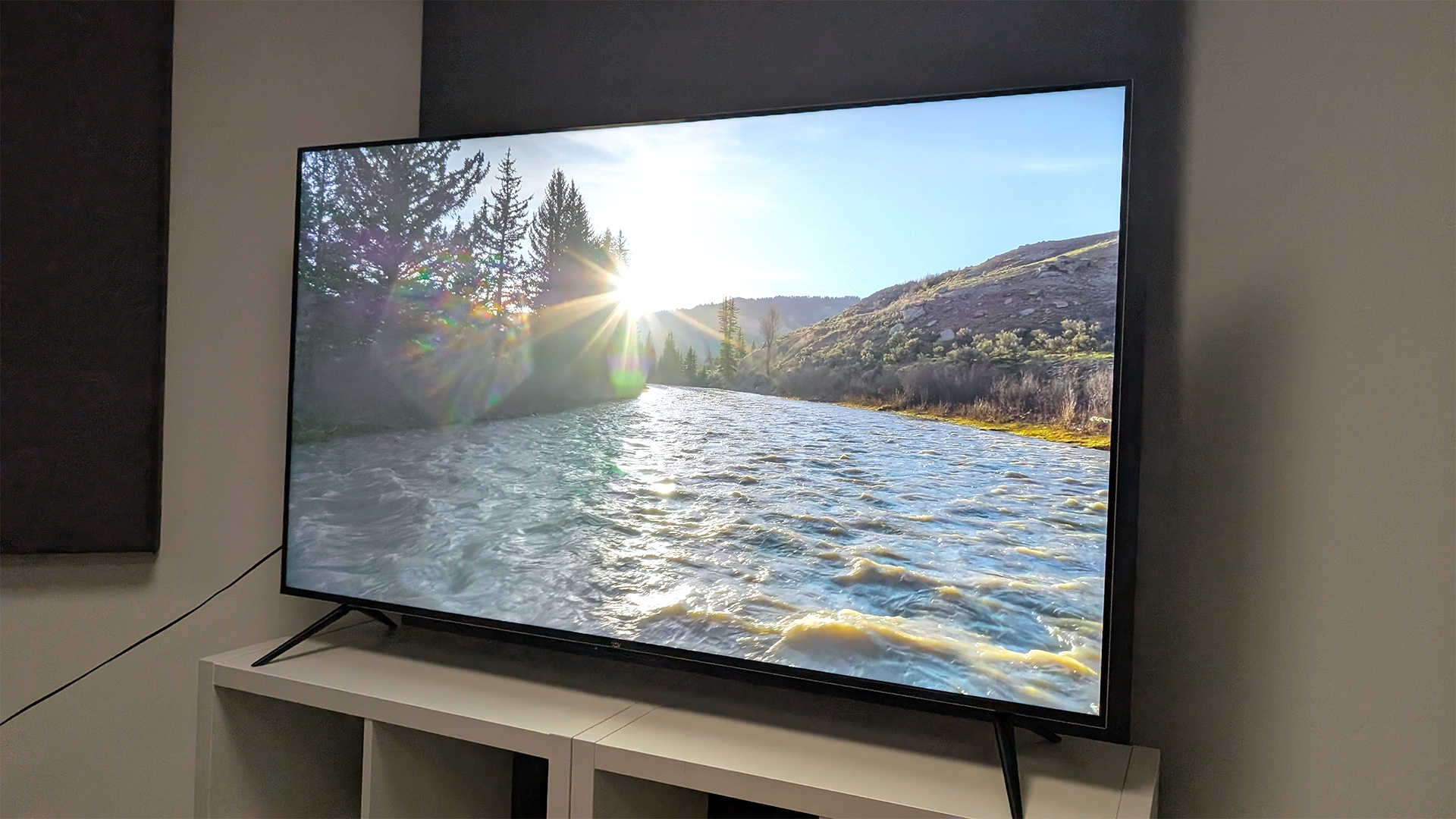
The Amazon Fire TV Omni Mini LED is available in four sizes – 55, 65, 75 and 85 inches. If you’re in the UK or Europe be warned the largest 85-inch model isn’t on sale yet.
The 65-inch model we have in our viewing rooms for review cost £1150 / $1090 when it launched at the end of last year, but we’re already seeing sporadic price drops on it. At the time of publishing it was selling for £950.
Below it, the 55-inch model retails for £850 / $820 and the larger 75-inch a slightly more expensive £1600 / $1400. In the US, the largest 85-inch Omni Mini LED will set you back $2100.
That’s a hefty premium on Amazon’s step-down Omni QLED line, but roughly in line with most mid-range Mini LED TVs.
The 65-inch Amazon Fire TV Omni QLED currently retails for £850 / $800. The two main rivals we’re testing it against are the 65-inch Hisense U7N, which currently retails for £1000 / $800 and slightly more premium 65-inch TCL C855K (review coming soon) which sells for £1199, but is not available in the US.
Design
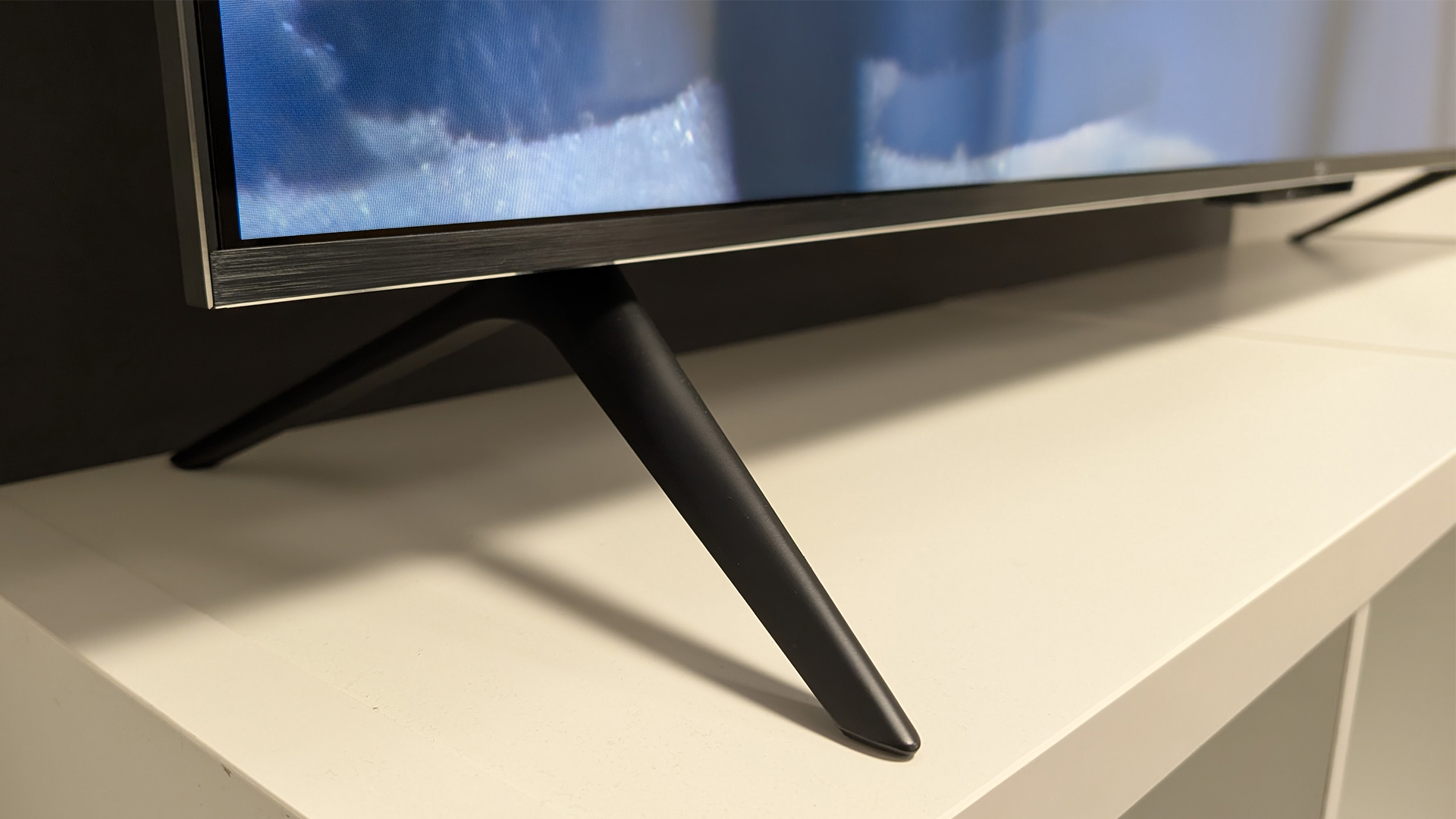
The Omni Mini LED is a fairly chunky beast. Like most TVs with a built-in rear firing subwoofer, it’s fairly thick. It also has a slightly curved back, which means it won’t sit flush if you wall mount it.
Otherwise it’s a nicely discreet looking unit, with fairly small bezels and a suitably unassuming finish which means it will sit in most homes comfortably. Its side facing inputs are also set far enough into the TV’s rear to not have cables awkwardly jutting out of the side.
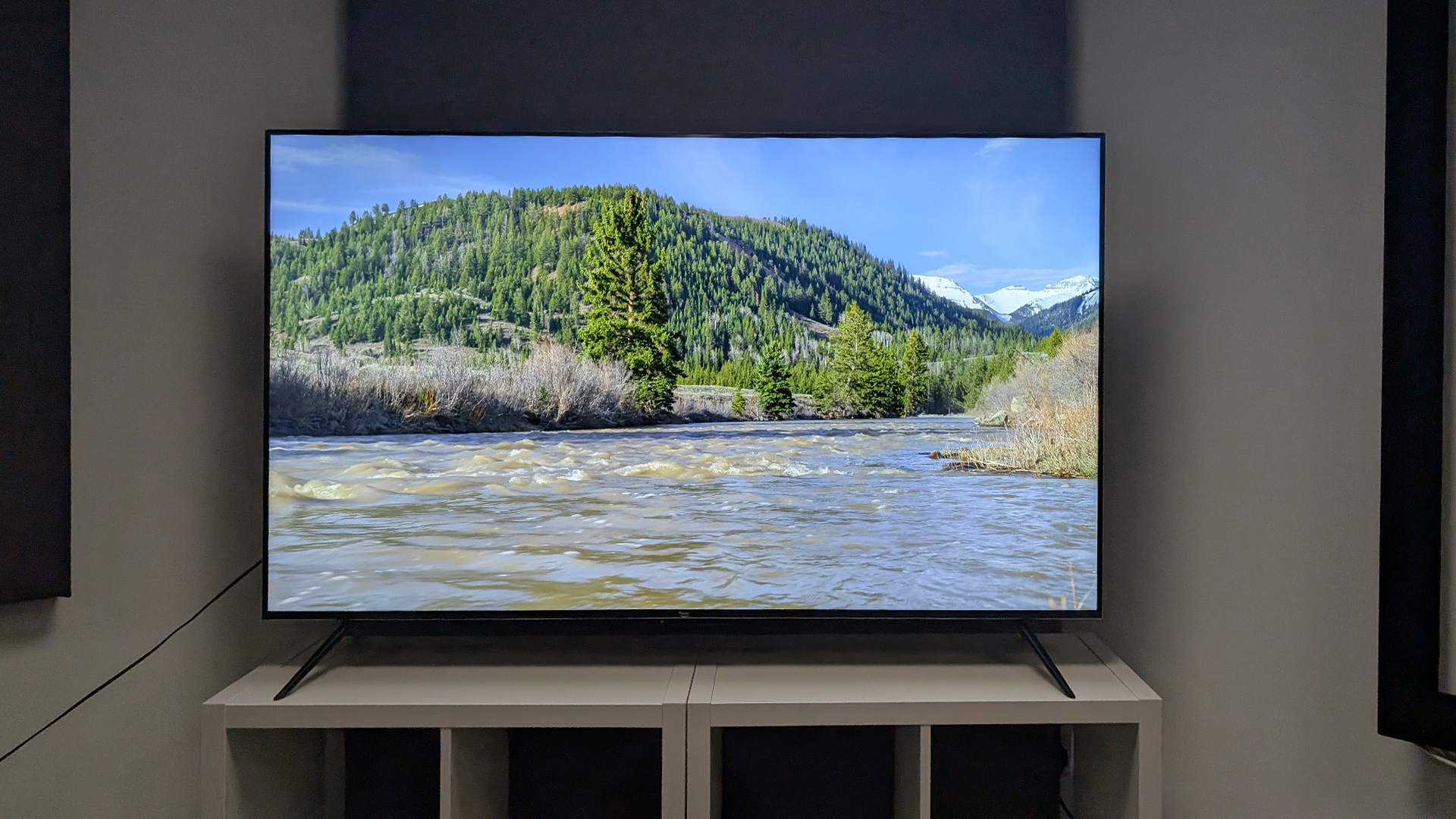
Screen size 65 inches (also available in 55, 75 and 85 inches)
Type QLED
Backlight Mini LED
Resolution 4K
HDR formats HLG, HDR10, HDR10+, Dolby Vision
Operating system Fire OS
HDMI Inputs 4 x (2 x 48Gbps HDMI 2.1)
Gaming features 4K/144Hz, 4K/120Hz, VRR, ALLM, Dolby Vision game mode
ARC/eARC eARC
Optical output? Yes
Dimensions (hwd, without stand) 84 x 145 x 7cm
We do have two gripes with the design, however. First is its stand. The TV has a twin foot-stand that’s easy enough to attach – all you have to do is slot the feet into the bottom edge of the Omni Mini LED and lock them in place with the included screws.
The problem is that, unlike similar Sony sets with the same stand design, the Omni Mini LED’s feet only have one stand option – at the furthest side of its left and right bottom edge. This means, like the Panasonic W90A we reviewed a few months ago, the Omni LED won’t comfortably fit on a smaller TV stand. That it doesn’t include a central mount option, where the feet can be placed closer to the centre of the TV’s bottom, is an annoyance.
Second, while the remote is nicely compact and has easy to navigate shortcuts for all the services and settings menus you would expect, it’s not backlit. Amazon would likely argue this is fine, as you can just use Alexa voice controls, which are supported on the Omni Fire TV. But if you’re like most of us and prefer to not shout at inanimate objects to make minor changes to your TV’s volume, a backlight would have still been welcome.
Features
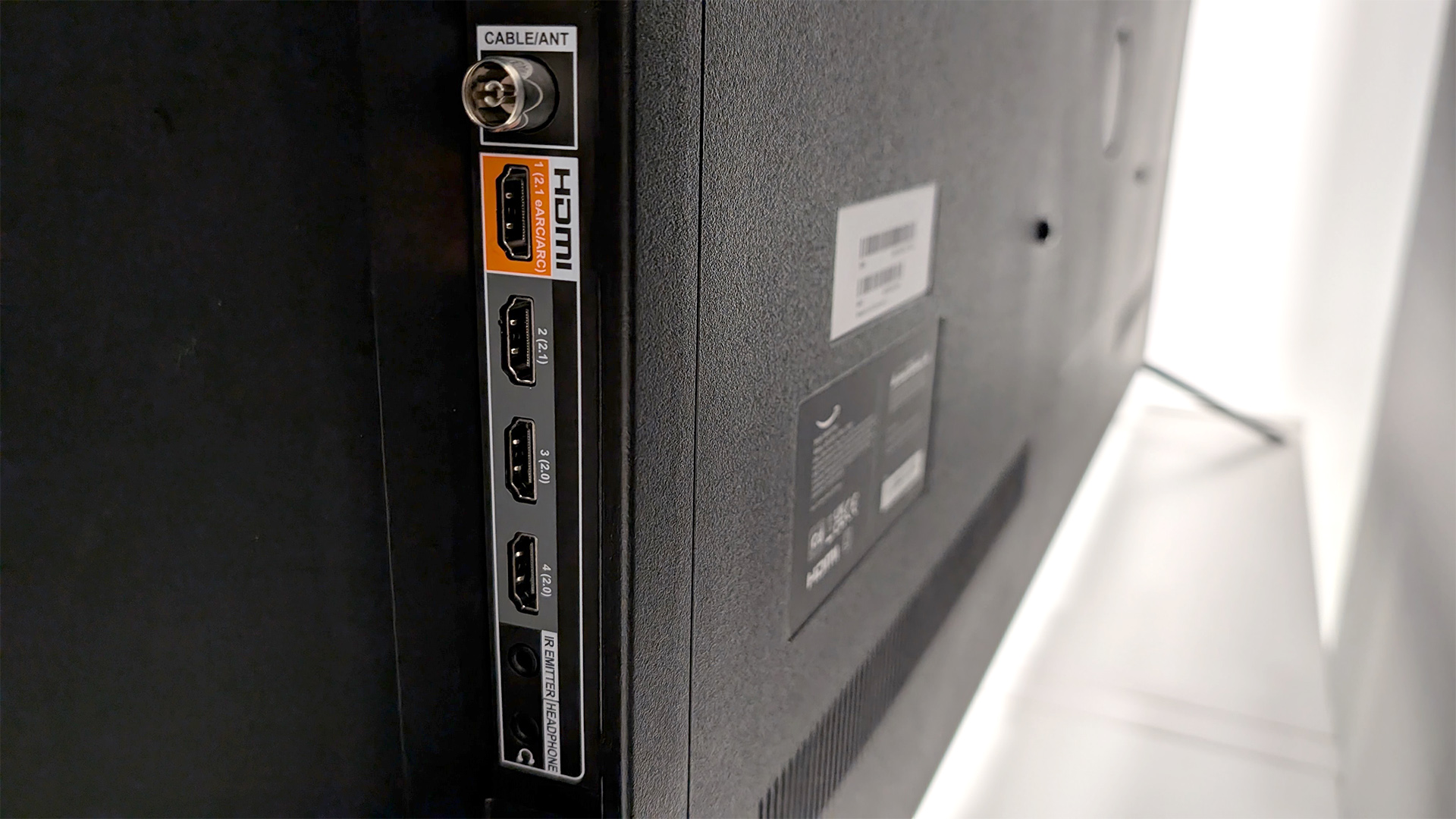
The Amazon Fire TV Omni Mini LED’s biggest upgrade on its QLED predecessor is in its name. Specifically, that it has a Mini LED backlight.
This is a key backlighting technology that uses a series of tiny LEDs arranged in gridded dimming zones. Like all Local Dimming TVs, its ability to charge zones, rather than an entire backlight, aims to give it better light control and boost things like contrast and black level. Mini LED takes this further as the Mini LEDs are smaller and more tightly packed, helping to also boost brightness.
Though we’re yet to find a Mini LED that can challenge an OLED at the top end of the market, it’s a staple sight in the mid-range TV space that definitely improves on most LCD sets’ performance when implemented well.
The panel used in our review unit features 768 dimming zones, and a quoted 1400 nits peak brightness, which is competitive with other similarly priced Mini LEDs. The Hisense U7N’s backlight is split into 384 dimming zones and the screen has a peak brightness of 1500 nits, by comparison.
For colour reproduction it also has a QLED TV panel, which uses Quantum Dots to try and help the set reproduce more vibrant colours than are possible from a standard LCD TV.
These improvements are welcome, but there have been plenty more important quality of life upgrades made to the Amazon Fire TV Omni Mini LED.
For starters, the TV has been upgraded to include two HDMI 2.1 inputs. One of these doubles as the eARC, which is what you will likely use to connect a soundbar or other audio system.
We’d have loved to see four HDMI 2.1s, which lets you connect and run multiple current generation games consoles at full speed without any cable swapping. But the Omni QLED has no 'real' HDMI 2.1 sockets, so this change is a welcome one.
This is especially true as Amazon has increased the Omni Mini LED’s refresh rate, offering 4K/144Hz playback via a new Gaming Mode – the other screen settings run at 4K/120Hz – as well as VRR and ALLM. That means they can run the PS5, Xbox Series X and modern PCs at radically higher frame rates than the basic Omni QLED, which tapped out at 4K/60Hz. The benefit here is that it can help make games feel smoother and more responsive.
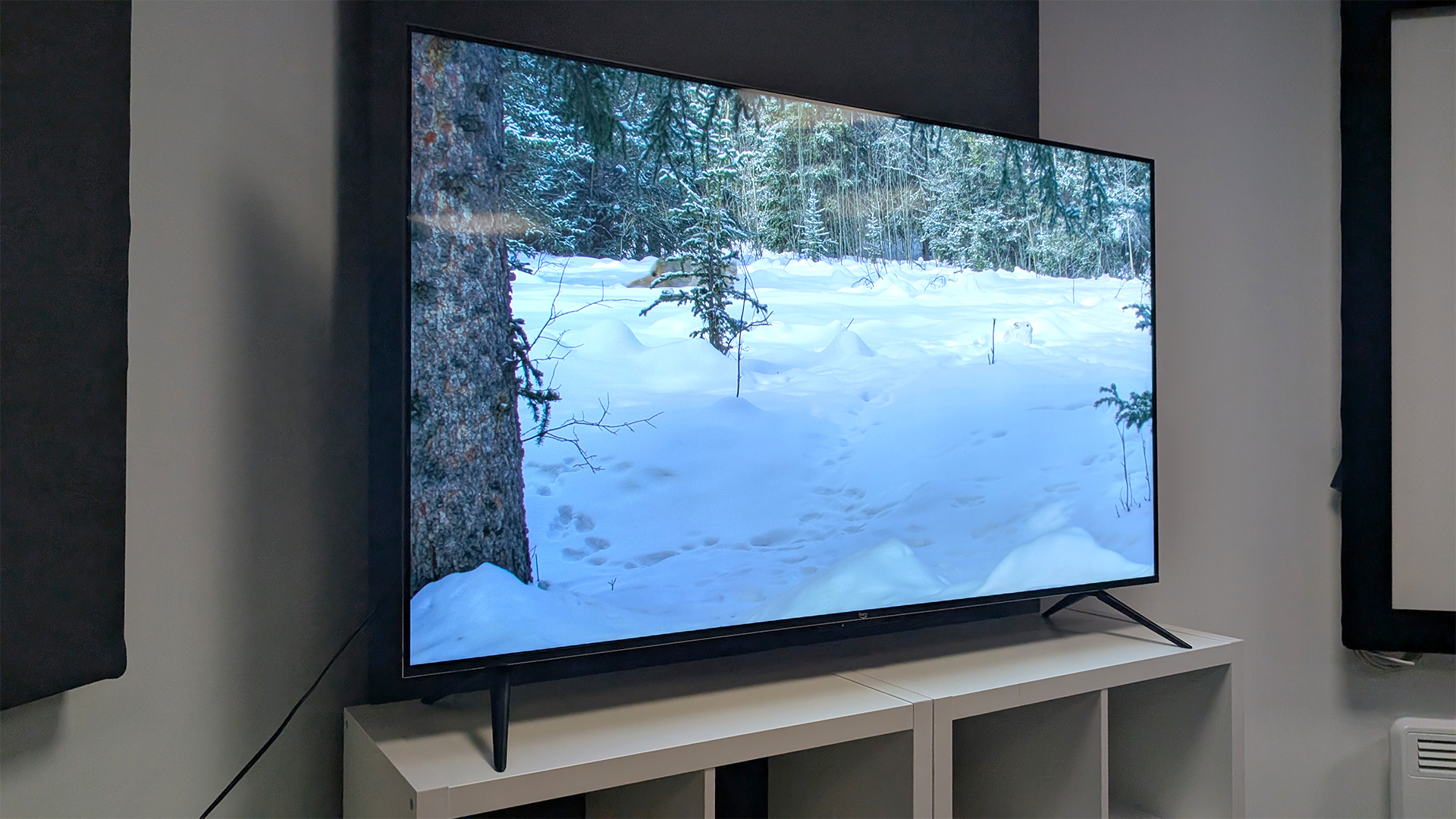
The TV’s 2.1 inbuilt sound system is also being billed as Dolby Atmos ready, which combined with the new integrated subwoofer should help give its sound a bit more low-end heft.
Outside of this the Mini LED retains all the perks that made us fans of the larger models in the Omni QLED range.
Fire OS means that, while there are plenty of ads, application support is excellent. Running through the usual suspects, Netflix, Disney+, Apple TV+ and Prime Video are all present and run correctly. Local services such as Now and TNT sports are also present. All run at their correct resolutions and compatible HDR standards.
The latter also remains excellent, with the TV supporting HLG, HDR10, HDR10+ and Dolby Vision. The offshoot Dolby Vision IQ and HDR10+ Adaptive are also supported – both of which use an included ambient light sensor to optimise the TV’s performance based on its environment.
So all-in-all, at this price, the TV is well stacked when it comes to features.
Picture
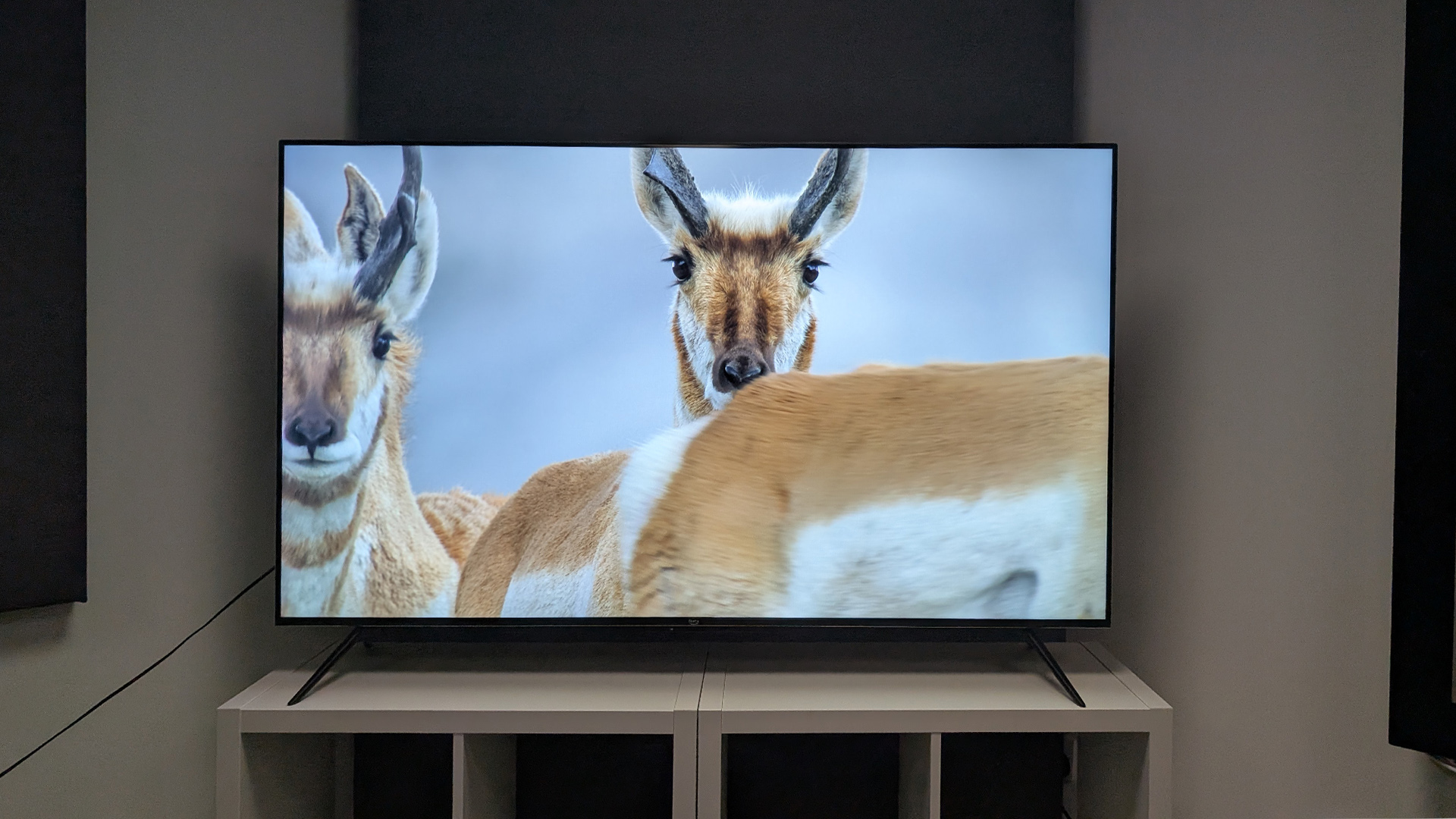
We start things off slow with our 4K Blu-ray of Barbie, and the iconic I’m Just Ken scene. In the TV’s Standard mode the image looks a little too cartoony and almost plastic – which is a strange thing to say with this test disc. Motion is over-smoothed and the contrast and colours look like they’ve been pushed too hard, leading to some contrast issues and loss of detail.
Switching to the Filmmaker mode, things flip to the other extreme and are too subdued, with the bright pinks and costumes of the characters looking flat and not holding the pop they should. On top of that, the setting disables many of the TV’s manual controls, so you can’t really change much in Filmmaker mode. Thankfully we quickly get better results switching to Movie Bright, where the more granular controls re-open, and we can make a few subtle but important changes to the Mini LED TV’s settings.
These include setting local dimming to high, locking the colour temperature to warm 2, reducing the motion handling setting to one and having intelligent HDR on. Once this is done, the movie retains its intended vibrancy, while characters' motions look natural and nicely defined.
Results are equally impressive moving to our Dune: Part 2 test disc. The Fire TV Omni Mini LED’s desertscape holds a decent amount of detail, with each sand grain holding a distinct spot. The TV does an admirable job retaining detail. Gears and machine parts in the darkest section of the spice mining vehicle which are lost on some competing sets, including the Hisense U7N, retain detail, which shows Amazon has taken a nicely balanced approach to tuning the set. This is rare at this end of the market where companies seem hell-bent on cranking the contrast to try and make blacks look deeper, losing dark detail in the process.
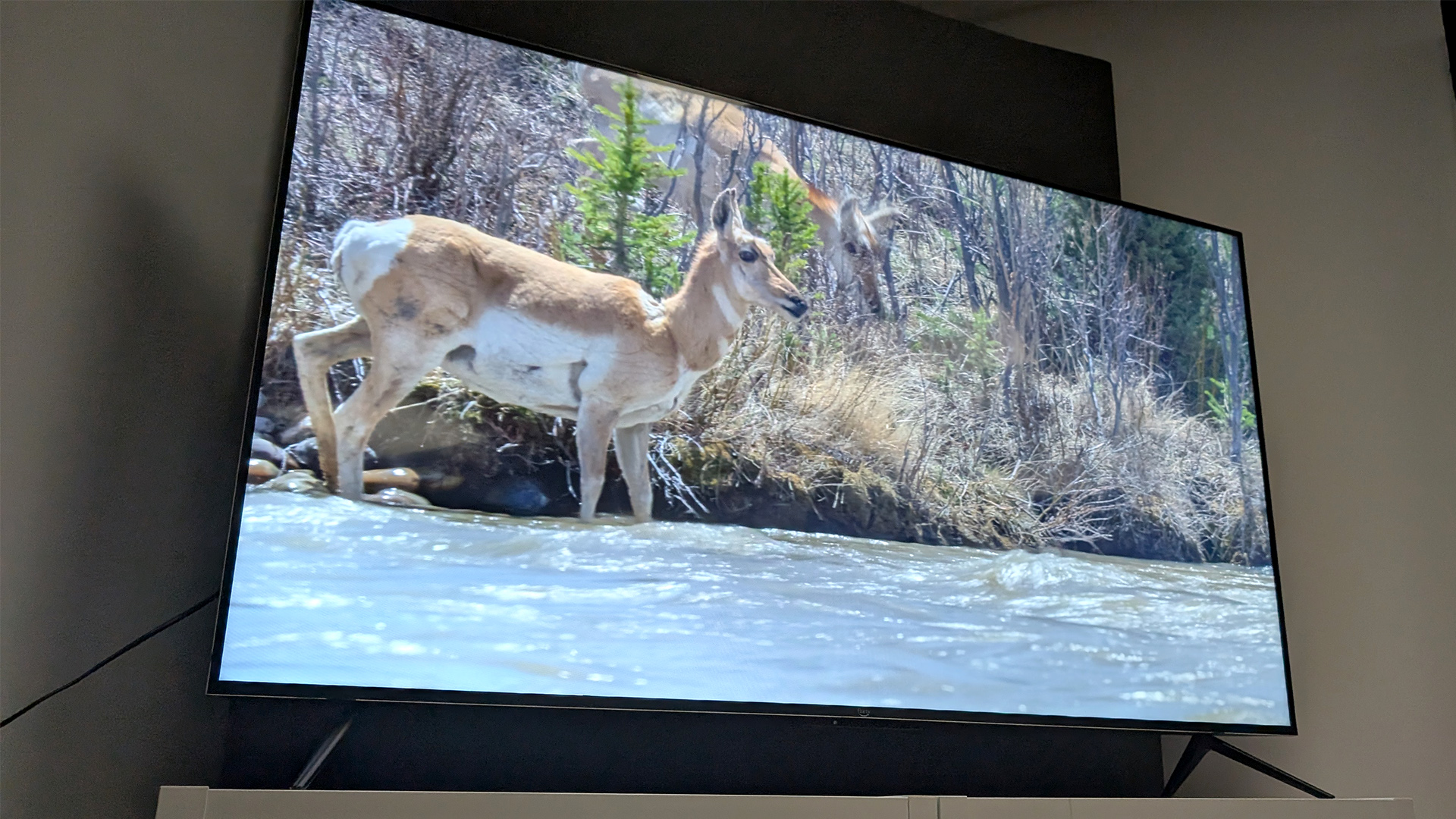
The only slight issue is that this focus does reveal one minor shortcoming – the Mini LED doesn’t offer quite as high peaks as its main rivals. The TV is undeniably night and day brighter than the base Omni QLED, but against the U7N and TCL C855K, reds in explosions don’t burn quite as bright. This becomes even more apparent when we switch to our Pan test disc, which is our go to brightness stress test due to its atypical 4000 nits mastering. Here the rival Mini LEDs retain more detail in a burning bright sunset, offering a hue of red and orange where the Fire TV Mini LED shows the section of the scene as pure white.
Moving to our standard Blade Runner 2049 test disc there’s immediately a noticeable amount of blooming around the white text on a black background introducing the movie. But it soon recovers and delivers one of the better performances we’ve seen on a set this price.
Though the black level isn’t anything to write home about, it’s good for a TV this price and deeper than the base Omni QLED. Outside of some blooming around bright sections directly next to black, the TV retains a decent amount of detail, with every wrinkle in the dusty farmhouse’s sofa remaining visible.
Our only minor quibble is that, despite offering decent skin tones in most instances, during this incredibly dark scene, Sapper Morton’s skin appears a little washed out, with reds in particular looking underrepresented. This is indicative of a wider problem that repeats when we move to our It test disk, with the yellow of Georgie’s raincoat not sitting separate from the otherwise grey background as much as it should.
These issues are largely forgivable given the set’s price and the fact it is at least consistent with its backlight control, and it doesn’t suffer from the rapid shifts in brightness seen on many Mini LED sets during demanding scenes with rapidly shifting light and dark sections. But, it is still a minor annoyance as the Amazon Fire TV Omni Mini LED gets so much right elsewhere.
Playing our SD copy of True Grit, a fantastic movie for testing upscaling due to its intentional grainy, spaghetti western finish, the opening scene looks solid. The lantern burning in the night-time opening scene looks authentic, as the snow falls with no aberrations creeping in.
Sound

The Amazon Fire TV Omni Mini LED comes loaded with a standard 2.1, Dolby Atmos-ready speaker arrangement that’s roughly in line with what you’ll find on any other set its price. Units with up-firing drivers tend to cost a fair bit more.
The audio it delivers is equally by the numbers for a TV its price. Starting with our standard Blade Runner 2049 scene two, low-end stress test, it immediately struggles. During the bassiest sections of the booming synth soundtrack distortion creeps in and there’s a lack of precision and heft to the section in general.
Jumping to a car chase scene in The Batman, the roaring car engines sound more like muffled mopeds and the sound is distinctly central, with the audio failing to match the left to right movements of the Batmobile.
It delivers a serviceable performance with Barbie’s I’m Just Ken, with voices sounding clear, and there being some separation between parts of the frequency range. But the lack of vibrancy and dynamics means it can’t do justice to heavy action scenes. Kenny Loggins was only in minor peril, and never quite entered the Danger Zone during the opening scene of Top Gun: Maverick. You will certainly want to invest in a soundbar if you want a truly immersive home cinema experience.
Verdict
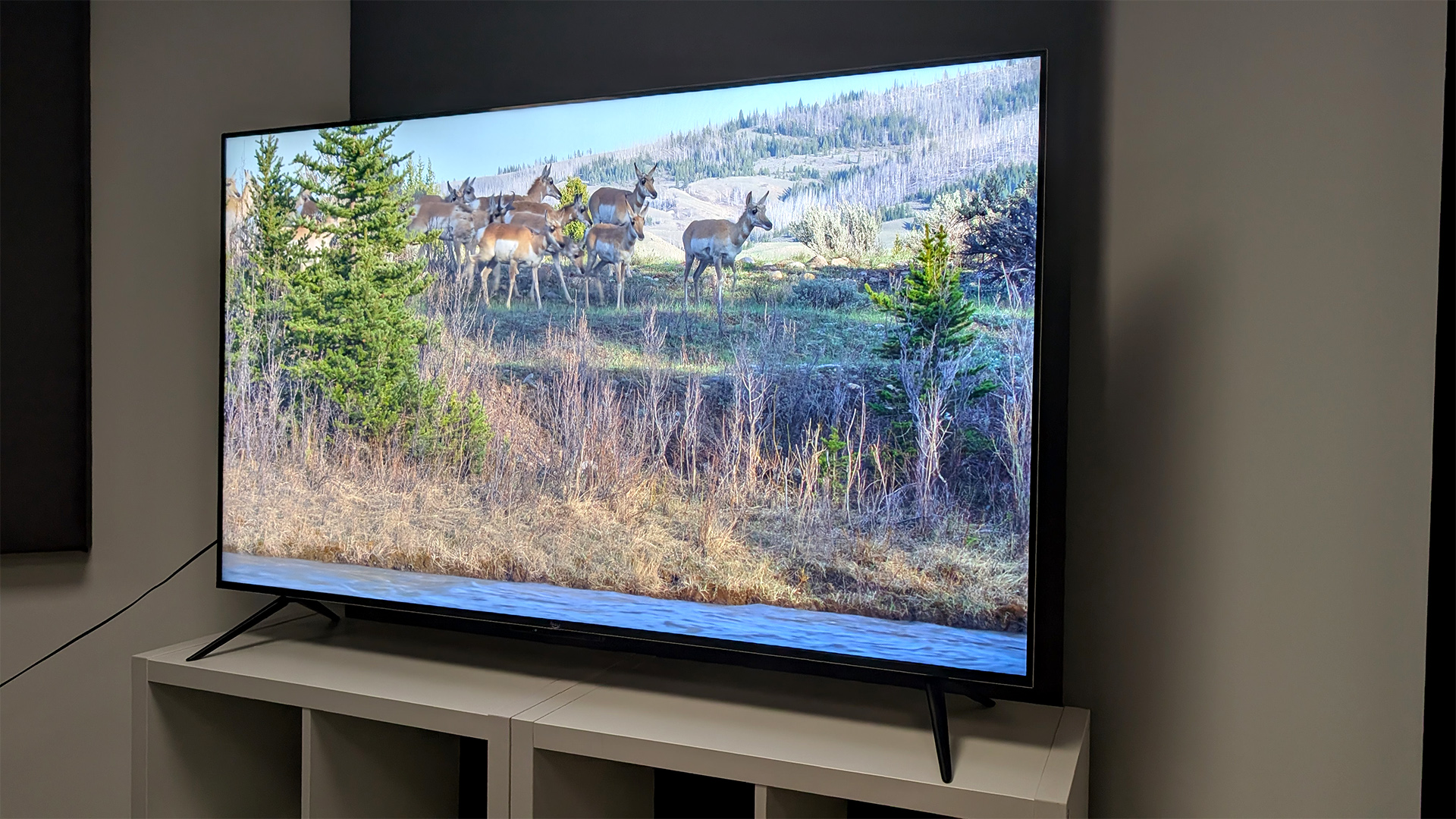
The Amazon Fire TV Omni Mini LED is a solid set for buyers ready to take their first jump from a basic LED into the mid-range TV market. Offering clear improvements on the base Omni QLED, it gets a lot right thanks to its focus on never pushing itself too hard. In fact, our big complaint is that at times it plays it too safe, leading to slightly dull colours and lower peaks than some rival Mini LEDs.
SCORES
- Picture 4
- Sound 3
- Features 5
MORE:
Read our review of the Hisense U7N
Read our Panasonic W90A
Best TVs: flagship OLEDs and affordable flatscreens tried and tested

Alastair is What Hi-Fi?’s editor in chief. He has well over a decade’s experience as a journalist working in both B2C and B2B press. During this time he’s covered everything from the launch of the first Amazon Echo to government cyber security policy. Prior to joining What Hi-Fi? he served as Trusted Reviews’ editor-in-chief. Outside of tech, he has a Masters from King’s College London in Ethics and the Philosophy of Religion, is an enthusiastic, but untalented, guitar player and runs a webcomic in his spare time.
- Lewis EmpsonSenior Staff Writer
